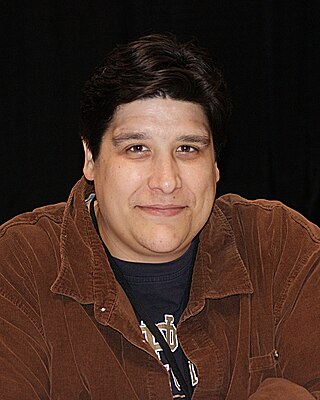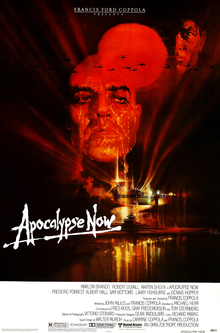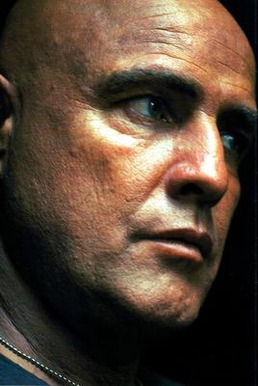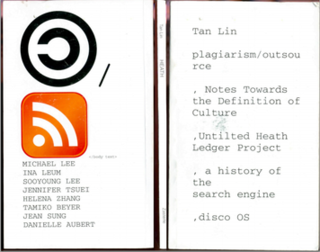
Heart of Darkness is an 1899 novella by Polish-British novelist Joseph Conrad in which the sailor Charles Marlow tells his listeners the story of his assignment as steamer captain for a Belgian company in the African interior. The novel is widely regarded as a critique of European colonial rule in Africa, whilst also examining the themes of power dynamics and morality. Although Conrad does not name the river on which most of the narrative takes place, at the time of writing, the Congo Free State—the location of the large and economically important Congo River—was a private colony of Belgium's King Leopold II. Marlow is given a text by Kurtz, an ivory trader working on a trading station far up the river, who has "gone native" and is the object of Marlow's expedition.

Joseph Conrad was a Polish-British novelist and story writer. He is regarded as one of the greatest writers in the English language and although he did not speak English fluently until his twenties, he became a master prose stylist who brought a non-English sensibility into English literature. He wrote novels and stories, many in nautical settings that depict crises of human individuality in the midst of what he saw as an indifferent, inscrutable and amoral world.
Kurtz is a fictional character in Joseph Conrad's 1899 novella Heart of Darkness. A European ivory trader in Central Africa and commander of a trading post, he monopolizes his position as a demigod among native Africans. Kurtz meets with the novella's protagonist, Charles Marlow, who returns him to the coast via steamboat. Kurtz, whose reputation precedes him, impresses Marlow strongly, and during the return journey, Marlow is witness to Kurtz's final moments.

Scott R. Kurtz is an American webcomic artist. Known for creating the daily online comic-strip PvP, Kurtz is among the first professional webcomic creators.

The Secret Agent: A Simple Tale is an anarchist spy fiction novel by Joseph Conrad, first published in 1907. The story is set in London in 1886 and deals with Mr. Adolf Verloc and his work as a spy for an unnamed country. The Secret Agent is one of Conrad's later political novels in which he moved away from his former tales of seafaring. The novel is dedicated to H. G. Wells and deals broadly with anarchism, espionage, and terrorism. It also deals with exploitation of the vulnerable in Verloc's relationship with his brother-in-law Stevie, who has an intellectual disability. Conrad’s gloomy portrait of London depicted in the novel was influenced by Charles Dickens’ Bleak House.

Edmund Musgrave Barttelot was a British army officer, who became notorious after his allegedly brutal and deranged behaviour during his disastrous command of the rear column in the Congo during Henry Morton Stanley's Emin Pasha Relief Expedition. He has often been identified as one of the sources for the character of Kurtz in Joseph Conrad's novel Heart of Darkness.

"The Hollow Men" (1925) is a poem by the modernist writer T. S. Eliot. Like much of his work, its themes are overlapping and fragmentary, concerned with post–World War I Europe under the Treaty of Versailles, hopelessness, religious conversion, redemption and, some critics argue, his failing marriage with Vivienne Haigh-Wood Eliot. It was published two years before Eliot converted to Anglicanism.

"An Image of Africa: Racism in Conrad's Heart of Darkness" is the published and amended version of the second Chancellor's Lecture given by Nigerian writer and academic Chinua Achebe at the University of Massachusetts Amherst in February 1975. The essay was included in his 1988 collection, Hopes and Impediments. The text is considered to be part of the postcolonial critical movement, which advocates to Europeans the consideration of the viewpoints of non-European nations, as well as peoples coping with the effects of colonialism. In the work, Achebe accuses Joseph Conrad of being "a thoroughgoing racist" for depicting Africa as "the other world".

Stephanie Syjuco, is a Filipino-born American conceptual artist and educator. She works in photography, sculpture, and installation art. Born in the Philippines, she moved to the San Francisco Bay Area in 1977. She lives in Oakland, California, and teaches art at the University of California, Berkeley.

The Rescue, A Romance of the Shallows (1920) is one of Joseph Conrad's works contained in what is now sometimes called the Lingard Trilogy, a group of novels based on Conrad's experience as mate on the steamer Vidar. Although it was the last of the three novels to be published, after Almayer's Folly (1895) and An Outcast of the Islands (1896), the events related in the novel precede those. The story follows Captain Tom Lingard, the recurring protagonist of The Lingard Trilogy, who was on his way to help a native friend regain his land when he falls in love with a married woman whose yacht he saves from foundering.
"Youth" is an autobiographical work of short fiction by Joseph Conrad first published in Blackwood’s Magazine in 1898 and collected in the eponymous collection Youth, A Narrative; and Two Other Stories in 1902.

Apocalypse Now is a 1979 American epic war film produced and directed by Francis Ford Coppola. The screenplay, co-written by Coppola, John Milius, and Michael Herr, is loosely inspired by the 1899 novella Heart of Darkness by Joseph Conrad, with the setting changed from late 19th-century Congo to the Vietnam War. The film follows a river journey from South Vietnam into Cambodia undertaken by Captain Willard, who is on a secret mission to assassinate Colonel Kurtz, a renegade Special Forces officer who is accused of murder and presumed insane. The ensemble cast also features Robert Duvall, Frederic Forrest, Albert Hall, Sam Bottoms, Laurence Fishburne, Dennis Hopper, and Harrison Ford.
Charles Marlow is a fictional English seaman and recurring character in the work of novelist Joseph Conrad.

Colonel Walter E. Kurtz, portrayed by Marlon Brando, is a fictional character and the main antagonist of Francis Ford Coppola's 1979 film Apocalypse Now. Colonel Kurtz is based on the character of a nineteenth-century ivory trader, also called Kurtz, from the 1899 novella Heart of Darkness by Joseph Conrad.
Heart of Darkness is a chamber opera in one act by Tarik O'Regan, with an English-language libretto by artist Tom Phillips, based on the 1899 novella of the same name by Joseph Conrad. It was first performed in a co-production by Opera East and ROH2 at the Linbury Theatre of the Royal Opera House in London on 1 November 2011 directed by Edward Dick. In May, 2015, the opera received its North American premiere in a production by Opera Parallèle, presented by Z Space in San Francisco, California.

Joseph Conrad was a Polish author who wrote in English after settling in England. He is regarded as one of the greatest writers in English, though he did not speak the language fluently until he was in his twenties, and always with a marked Polish accent. Before embarking on writing, he had a career sailing in the French, then the British, merchant marine. Of his 19-year merchant-marine career, about half that time was spent actually at sea.
Robert Gavin Hampson FEA FRSA is a British poet and academic. Hampson was born and raised in Liverpool, studied in London and Toronto and settled in London. He is currently Professor Emeritus at Royal Holloway. He was Visiting Professor at the University of Northumbria (2018-21) and Research Fellow at the Institute for English Studies, University of London (2019-23). He is a member of the Poetics Research Centre and the Centre for GeoHumanities at Royal Holloway. He is well known for his contributions to contemporary innovative poetry and the international study of Joseph Conrad.
The Project Formerly Known as Kindle Forkbomb is a work done by the Swiss-Austrian-American duo known as Ubermorgen. The artists are known for their creative use of digital media, combined with other means such as performance and various offline medium to convey their ideas. The project is showcased on Ubermorgen's website "http://ubermorgen.com/uuuuuuuntitled.com/" and was initially shown at Kunsthal Aarhus in the Show "Systemics #2: As we may think " and at DAM Gallery Berlin, both in 2013.

HEATH (plagiarism/outsource) by Tan Lin is book "set" in plain text, composed of a mash up of data sources from RSS feeds, blog posts, Google searches, retrieved photographs, handwritten notes, and items of that nature. It is divided into multiple parts, the most famous of which being plagiarism/outsource. Lin devotes part of the book to a series of web searches regarding the death of actor Heath Ledger in 2008 in Untilted Health Ledger Project, which is assumed to be the reason for the name of the whole book.

"Heart of Darkness" was an American television play broadcast on November 6, 1958, as part of the CBS television series, Playhouse 90. It was the seventh episode of the third season of Playhouse 90. The play was adapted from Joseph Conrad's novella, Heart of Darkness.














